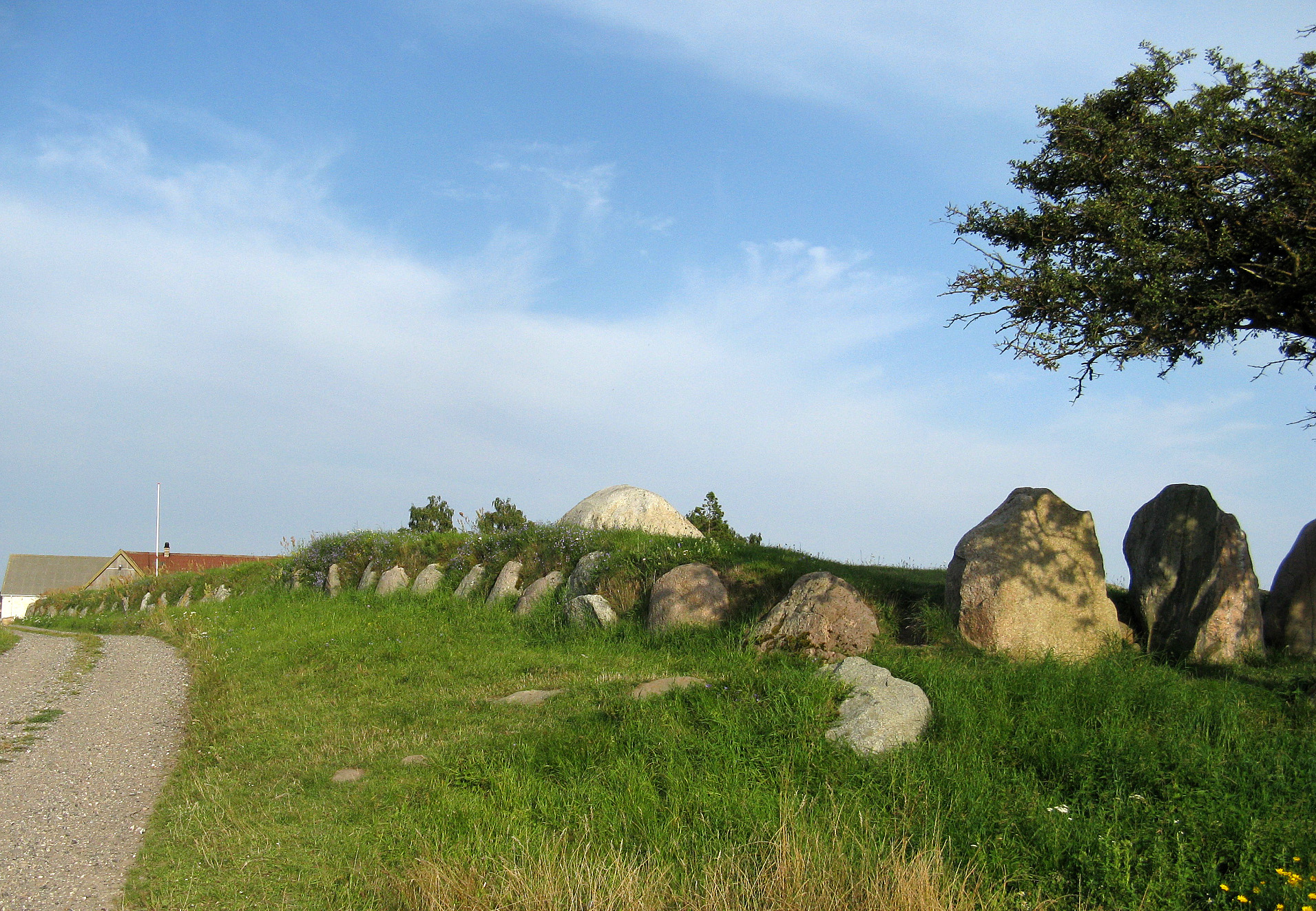Grønsalen on:
[Wikipedia]
[Google]
[Amazon]
 Grønsalen or Grønjægers Høj is located near Fanefjord Church on the Danish island of Møn. Some 100 metres long and 10 metres wide, it is
Grønsalen or Grønjægers Høj is located near Fanefjord Church on the Danish island of Møn. Some 100 metres long and 10 metres wide, it is
Grønsalen from Insula Moenia.
Retrieved 18 September 2009. "Sagn & myter i Fanefjord sogn med tilknytning til gravhøje & bakker"
, ''Fanefjord Sogns Grundejer- & Beboerforening''. Retrieved 23 April 2011.
{{DEFAULTSORT:Gronsalen Møn Megalithic monuments in Denmark Neolithic Europe Tumuli in Denmark Funnelbeaker culture Archaeology of Region Zealand
 Grønsalen or Grønjægers Høj is located near Fanefjord Church on the Danish island of Møn. Some 100 metres long and 10 metres wide, it is
Grønsalen or Grønjægers Høj is located near Fanefjord Church on the Danish island of Møn. Some 100 metres long and 10 metres wide, it is Denmark
)
, song = ( en, "King Christian stood by the lofty mast")
, song_type = National and royal anthem
, image_map = EU-Denmark.svg
, map_caption =
, subdivision_type = Sovereign state
, subdivision_name = Kingdom of Denmark
, establish ...
's largest long barrow
Long barrows are a style of monument constructed across Western Europe in the fifth and fourth millennia BCE, during the Early Neolithic period. Typically constructed from earth and either timber or stone, those using the latter material repre ...
and is widely recognised as one of Europe's outstanding ancient monument
In British law, an ancient monument is an early historical structure or monument (e.g. an archaeological site) worthy of preservation and study due to archaeological or heritage interest. The ''Ancient Monuments and Archaeological Areas Act 1979 ...
s.
Grønsalen Barrow
The barrow, rising over a metre above the surrounding area, is encircled by 134 large stones. The grave, at the centre, is covered with earth and contains three burial chambers, two of which are open. It is not known when they were first opened or what was found inside. The long barrow was examined in 1810 by Bishop Münter and was protected by law after that. On the basis of its shape, the barrow has been dated asneolithic
The Neolithic period, or New Stone Age, is an Old World archaeological period and the final division of the Stone Age. It saw the Neolithic Revolution, a wide-ranging set of developments that appear to have arisen independently in several p ...
, approximately 3500 BC.
The first historical reference to the site was in ca. 1186 when it was called ''Grónesund''.
Grøn Jæger
Grønjægers Høj means "the mound of Grøn Jæger". Høj, from theOld Norse
Old Norse, Old Nordic, or Old Scandinavian, is a stage of development of North Germanic dialects before their final divergence into separate Nordic languages. Old Norse was spoken by inhabitants of Scandinavia and their overseas settlemen ...
word ''haugr'' means hill, mound or barrow. Grøn Jæger (lit.: Green Hunter) refers to a legendary hunter and king. He is said to have ruled this western part of Møn, just as Jøing Opsal (sometimes called ''Klintekongen'' or the King of the Cliff) ruled over the eastern part. According to local folklore, Grøn Jæger and his wife Fane were buried in the barrow. Queen Fane also lent her name to the nearby inlet of ''Fanefjorden'' (lit.: The fjord of Fane).Retrieved 18 September 2009.
, ''Fanefjord Sogns Grundejer- & Beboerforening''. Retrieved 23 April 2011.
References
Bibliography
* Kjer Michaelsen, Karsten: ''Politikens bog om Danmarks oldtid.'' Copenhagen 2002. 311p.External links
{{DEFAULTSORT:Gronsalen Møn Megalithic monuments in Denmark Neolithic Europe Tumuli in Denmark Funnelbeaker culture Archaeology of Region Zealand